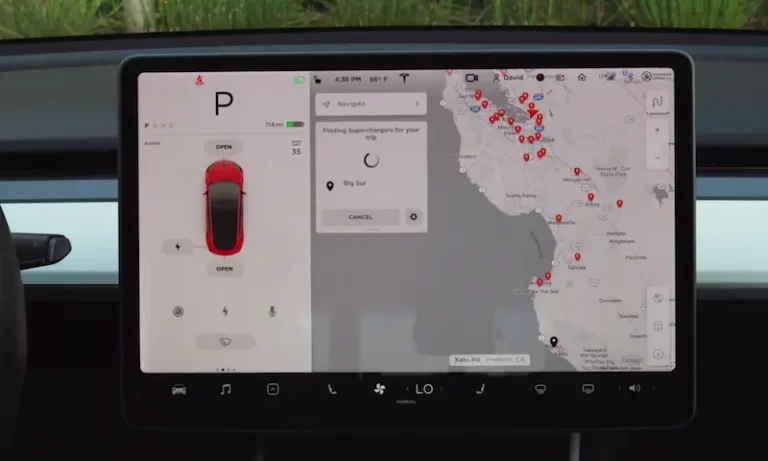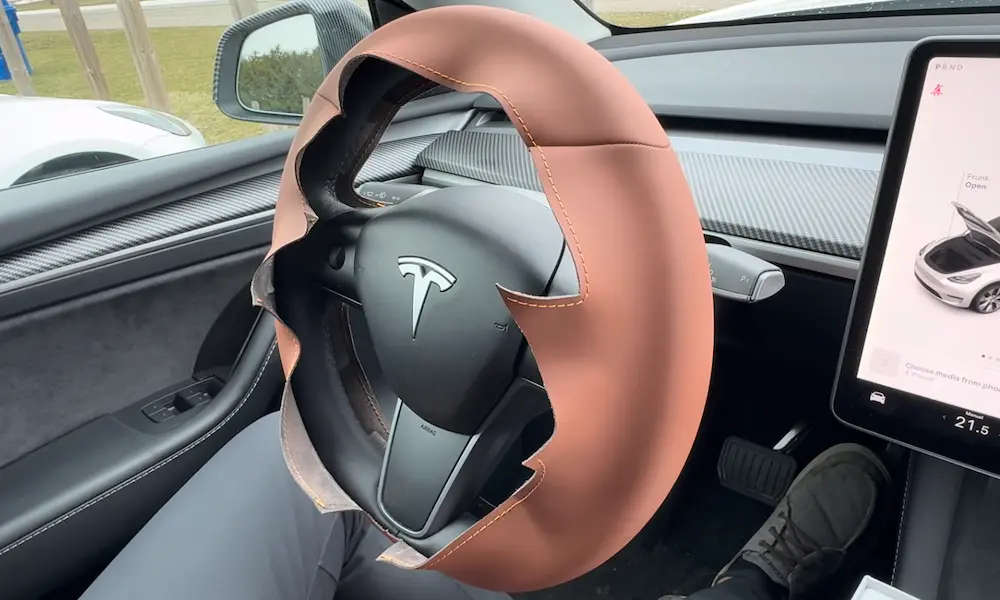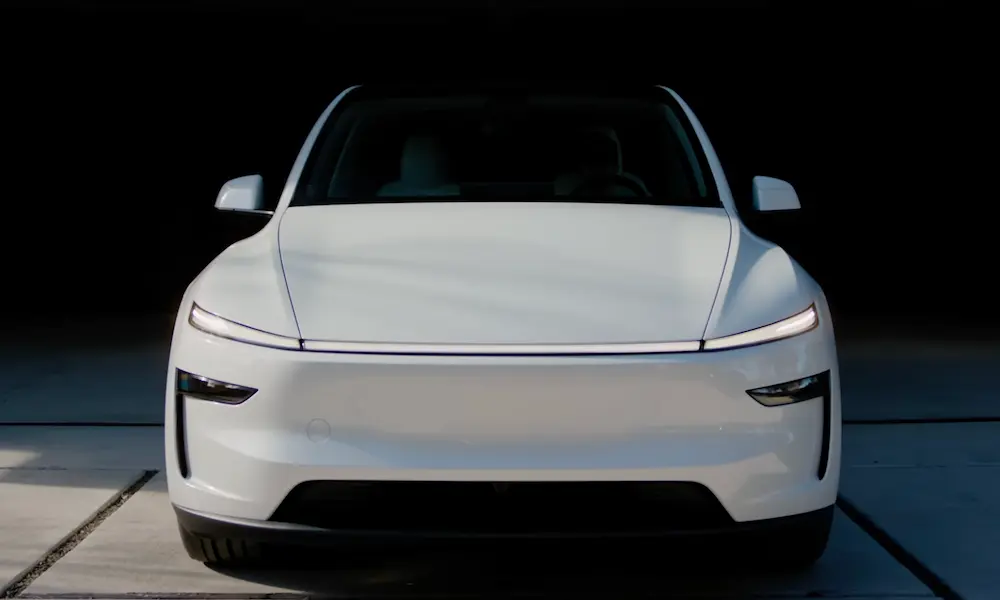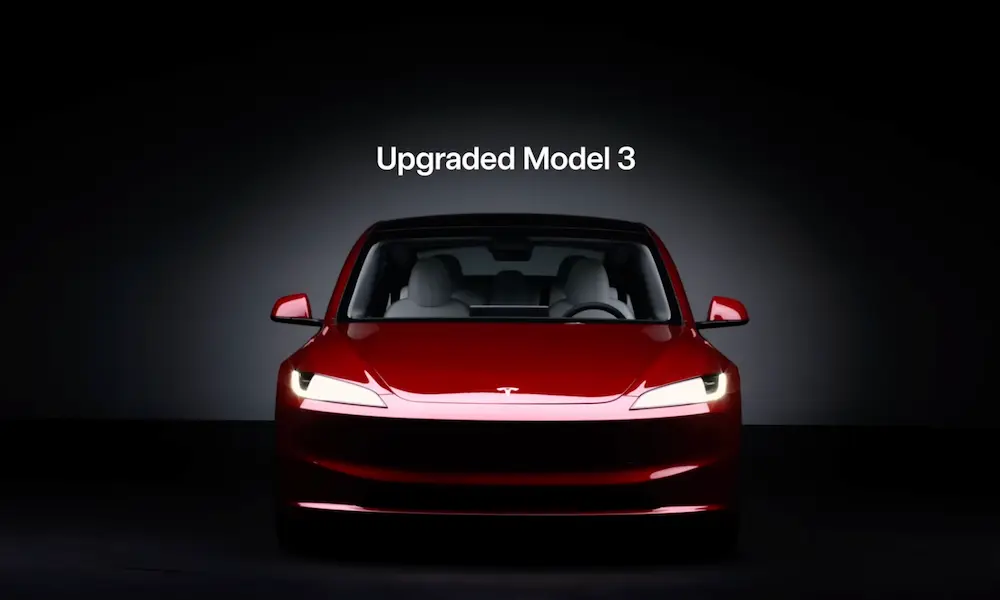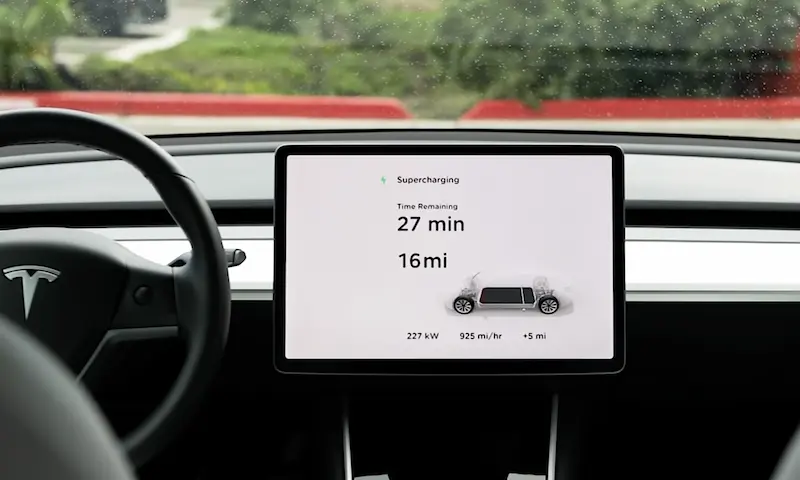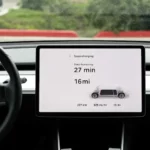The notification “Regenerative Braking Temporarily Reduced” can be worrying. That’s particularly true for a new Tesla owner. But, there’s no need to worry. The notification means that your regenerative brakes won’t perform as efficiently as they should.
We have discussed how to get out of this ‘Tesla regenerative braking not working’ situation below. Also, we will give you a few tips to prevent encountering this problem in the future.
How Does the Tesla’s Regenerative Braking Work?
The Tesla’s regenerative braking uses the vehicle’s motor to create resistance to slow or stop the vehicle. While the motor reverses power to bring your car to a halt, it captures the kinetic energy. It then converts the energy into electricity to charge the battery.
The regenerative braking system is one of the first things you’ll notice when driving an electric vehicle (EV). People commonly call the system Regen. Note that conventional braking systems use friction in stopping the wheels. But, as mentioned, Regen uses a car’s electric motor in creating enough resistance to slow or stop the car. That makes driving your Tesla without touching the brake pedal possible unless in an emergency.
Thus, it reduces wear and tears on your braking parts. Converting the kinetic energy into electricity adds up to 10 percent more of your vehicle’s range. It also increases the battery’s life by up to 50 percent. Sometimes, the Regen can become limited. When it does, your vehicle will take a while to stop.
You’ll see a notification on the screen that the regen braking is limited or ‘doesn’t work.’ That’s the situation you’re in. So, let’s now look at how to resolve it.
How To Fix a Limited Tesla Regenerative Braking System
To fix a limited Tesla regenerative braking system, drive your car normally to enable the battery to warm up. Above 68 degrees F is the ideal battery’s temperature. You can also activate a feature that allows regular braking automatically whenever needed.
Let’s get into the details:
Possible Fix #1: Drive the Car for the Battery to Warm Up
A temperature drop is one of the most common causes of the regenerative braking concern. Your vehicle will limit Regen when the battery is below 68 degrees F. As stated, you may see a notification explaining what is happening.
The braking may only reduce its efficiency or stop working, depending on the battery’s temperature. Generally, that happens if the vehicle is extremely cold or in the winter. It’s difficult to charge the battery when it’s chilly. If the temperatures drop to about 32 degrees F, the battery may stop charging completely.
However, the Regen will be restored once the temperature improves and the battery warms up. That means you only need to drive your car for a few minutes to fix the problem. As soon as the temperature rises above 68F, the battery will start charging as usual. In return, your regenerative braking will begin functioning normally.
Possible Fix #2: Activate Automatic Regular Brake Application
Tesla’s latest software update (2022.16.0.2) is a game changer in braking their cars. It adds the option to apply regular braking to compensate for the limitation of the Regen.
According to the automaker, your electric car can now apply regular brakes automatically. That will enable the vehicle to consistently decelerate when Regen is limited due to battery temperature or a state of charge. Thus, all you need is to activate the function.
First, tap “Controls” on display. Next, select the “Pedals & Steering” option. Finally, choose “Apply Brakes When Regenerative Braking is Limited.” You’ve now resolved your problem and won’t need the drivetrain to warm up for the Regen to regain its full capacity.
How To Prevent a “Regenerative Braking Not Working” Issue?
To prevent a “regenerative braking not working” issue, follow a few essential practices. First, always park your electric vehicle in a warm place, especially during the cold seasons. Second, avoid having the battery charge to 100%. It would help if you also carried out regular tire inspections. That would prevent driving your Tesla with worn-out tires.
Let’s explain that in detail:
Tip #1: Park Your Car in a Warm Place
As mentioned, exposing your vehicle to extreme cold is not good for your regenerative braking. Always ensure you park your Tesla in warm or climate-controlled parking. That’s essential, especially if you live in a chilly region. Keeping the vehicle warm will help ensure the battery’s temperature remains within range.
Tip #2: Inspect Your Tires Regularly
Worn-out tires will compromise your vehicle’s braking ability. Your car must have its tires in perfect condition always. That will ensure your regenerative braking perform well.
Note: After a tire change, the regenerative braking may temporarily reduce. Your Tesla regen will need time to recalibrate once you change the tires. The good thing is it’s an issue that resolves itself automatically after driving your car for about an hour.
Tip #3: Keep Your Battery 80% to 95% Charge
Charging your EV car can take a considerable amount of time. Many people leave their vehicles plugged in overnight to charge batteries to 100%. That is good. But, a battery full to capacity is bad for your regenerative braking.
So, let your battery not charge fully. That will avoid compromising the effectiveness of this braking feature.
Conclusion
There are two main reasons why Tesla’s regenerative braking would stop working. These are, the battery’s temperature is too low, or the battery’s charge is 100%. Our guide has offered solutions to these problems. Here’s a recap:
- Your regenerative braking will limit if your car’s battery drops below 68-degree Fahrenheit
- To fix the limitation issue, drive your EV to allow the battery to warm up
- You can also activate the auto braking system. It will apply regular brakes whenever the Regen is limited
Parking your car in climate-controlled place is one way to prevent regen limitations. Now you’ve got all the information you need. Fix the problem and get your Regen to work normally again. Take your car to a Tesla dealer if the problem persists.

